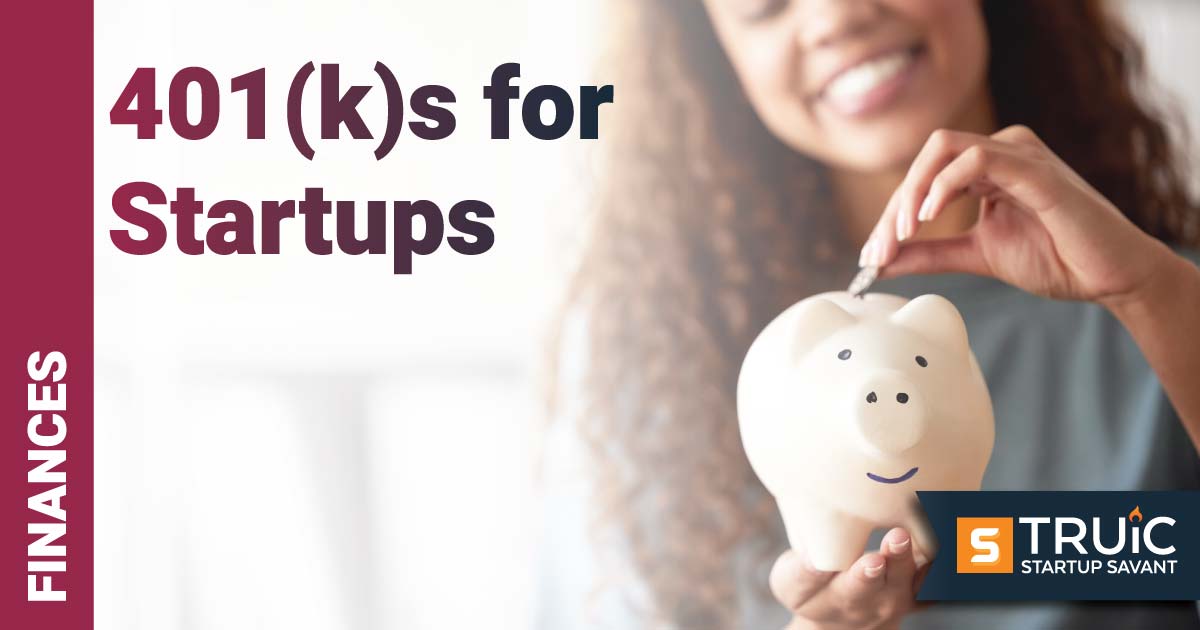What Are Rollovers as Business Startups (ROBS) and How Do They Work?

Last Updated: By Madison Holt
If you're an aspiring entrepreneur with a substantial nest egg in your retirement account, you might be mulling over ideas on how to fund your startup dreams. One potential avenue is to use Rollovers as Business Startups (ROBS). This method allows you to tap into your retirement funds without incurring any tax penalties, but the process is delicate and filled with legislature-specific details that, if overlooked, could lead to serious financial problems.
The concept of ROBS might seem like a great opportunity for accessing startup capital, but it’s important to understand this method is far from simple. It's a complex procedure that requires setting up a C corporation, establishing a 401(k) plan for that corporation, becoming an employee of that corporation, and then rolling your retirement funds into this new plan to buy stock in the corporation. All of this has to be done meticulously and in the right order to ensure a successful ROBS outcome.
Understanding ROBS Financing
You can think of ROBS as a strategic tool designed for entrepreneurs who have a significant portion of their wealth tied up in a retirement savings account and are experiencing difficulties accessing other forms of financing. The allure of ROBS lies in its ability to offer a tax-free route to fund their business ambitions.
It’s important to note, however, that using ROBS to fund your business venture puts your retirement savings at risk. This means if your business fails, it's not just the entrepreneurial dream you lose, but your retirement safety net too. This reality further highlights the importance of considering alternatives such as personal loans, business credit cards, lines of credit, crowdfunding, grants, and even peer-to-peer lending before diving headfirst into a ROBS transaction.
How a ROBS Transaction Works
Rollovers as Business Startups (ROBS) can be a great option for some entrepreneurs, depending on your specific situation. It's a process that begins with setting up a C corporation and then creating a 401(k) plan for this new C corp. As a part of the plan, the entrepreneur then becomes an employee of their own business.
Once that’s all set up and ready to go, the next step is the “core” part of the ROBS system, where the entrepreneur's retirement funds are used to buy stock in the business. It's essential for every budding business owner to understand that completing these steps effectively rolls their retirement savings into their new venture without any tax-related repercussions.
For instance, let's consider Sarah, who is an entrepreneur with significant savings in her 401(k). Tired of her corporate job and eager to venture into her passion project of opening a bakery, she decides to use ROBS. Following the process, she sets up her bakery as a C corporation, creates a 401(k) plan for it, and rolls over her retirement savings to buy stock in her bakery. Voila! She's funded her dream project without any tax implications.
Pros
ROBS can be a potential game changer for determined entrepreneurs. In this section, we’ll discuss the pros of the ROBS system.
Tax-Free Financing
One of the primary advantages of ROBS is the tax-free nature of the funding. It allows entrepreneurs to draw upon their retirement funds to finance their business venture without being penalized with income taxes or early withdrawal fees. This aspect can provide an immediate cash injection to help fuel the startup of your choice.
Independent Fundraising
Bypassing traditional lending institutions is another significant advantage of ROBS. This financing method doesn't require entrepreneurs to seek approval or accumulate additional debt from a bank or other lending institutions. Essentially, it keeps you in control of your financial decisions without external scrutiny.
Aligned Investment
On choosing the ROBS route, entrepreneurs become employees of their own company, aligning their personal interests with the future success of their business. This means the entrepreneur's financial future and the prosperity of the company become intertwined, driving a more profound commitment to the venture's success.
Cons
Despite its attractive benefits, ROBS is not without potential pitfalls. Let’s walk through several of these pitfalls and the risks involved.
Risk to Retirement Savings
Perhaps the most discernible downside of ROBS is the risk it poses to your retirement nest egg. Should your new business fail, you risk losing retirement savings that were meant to secure your future.
Compliance Complexity
ROBS transactions are known for their complexity and require adherence to stringent IRS guidelines. This process may require professional assistance, adding another layer of consideration involving time, stress, and potential cost.
Operating as a C Corporation
Opting for a C corporation structure, as required for a ROBS setup, comes with its own unique challenges. Specific tax implications like double taxation on corporate profits and shareholder dividends, as well as additional filing requirements, can complicate the entrepreneurial journey. It's important to be well-informed about these potential hindrances before choosing ROBS as your financing method.
Eligibility Requirements
Getting into a ROBS arrangement could be a great way to fund your startup, but not everyone can smoothly go down this path. There are certain requirements you must fulfill to qualify for ROBS.
Let's take a moment to understand what these prerequisites are before you consider diving in.
Eligibility is essentially two-pronged. First, you need to have enough funds in your retirement account. To cover the costs of setting up and running a ROBS arrangement, experts usually recommend having at least $50,000 in the account. It's not a hard and fast rule, but any lower than that, and the costs may outweigh the benefits. If you have less than this amount and don't want to take on additional debt, though, you might still consider going the ROBS way based on your individual situation and business goals.
The second prerequisite is that you must be an active employee of the business. The ROBS arrangement isn't designed for passive investments. Instead, it's structured so that those who use it are actively involved in the operation of their business. This means it can't be used to fund an investment property that you'll be renting out or a business where you won't be involved in day-to-day operations.
Let's break down these two eligibility requirements further:
- Sufficient Retirement Savings: The amount in your retirement savings is critical because it determines whether the ROBS plan will be cost-effective for you. Setting up a ROBS involves some expenses, such as the setup fee, which could range anywhere from $5,000 to $15,000. Then, there are ongoing costs, such as maintenance fees, that are usually billed monthly. If your retirement savings are not substantial enough, these expenses could drain your funds faster than your business can start generating revenue to support them.
- Active Employment: You must be an active employee of your business. The Internal Revenue Service (IRS) requires this so that the ROBS arrangement meets the "bona fide” employee requirement. This term - bona fide employee – essentially means a genuine employee, i.e., an individual who is genuinely engaged in providing services to the company. So, if you're planning to own the business but hire a manager to run it without your active participation, the ROBS plan may not work for you.
To sum it all up, while a ROBS arrangement can be a practical way of funding your new business without incurring debt or paying early withdrawal penalties, it's crucial to understand the eligibility requirements before going down this road. Consider your current financial situation and your role in the future business to make 100% sure that the ROBS plan will indeed be a feasible and beneficial option for you.
Alternatives to Rollovers as Business Startups (ROBS)
While ROBS carries the advantage of using retirement savings tax-free for business funding, other alternatives exist that may offer safer or more flexible options.
Personal Business Loans
Many banks and online lenders offer personal business loans that use your personal credit for approval rather than the business's performance. Though you must repay the debt regardless of your business's success, this alternative prevents putting your entire retirement savings at risk.
Business Credit Cards
Business credit cards can provide flexible financing for startups, especially when needed for smaller routine expenses. They come with limits on how much you can borrow initially, though. As your business grows and shows consistency in income, these limits can increase; just remember that interest rates can be high if you don’t pay off your balance each month.
Startup Grants
Grants offer another route of funding where you won't need to repay the funds if you're approved. The downside is that grant money can be very competitive and often restricted to specific industries or demographics. Keep an eye on application windows, too, because they are typically short and sometimes only once a year.
Crowdfunding
Crowdfunding allows entrepreneurs to raise money from a large number of people, each contributing a small amount. Websites like Kickstarter and Indiegogo are great platforms for this. While it’s harder to raise significant amounts through crowdfunding, it can be a viable option for smaller projects or to top off other funding efforts. The bonus is you’ll also gain exposure and early customers in the process.


